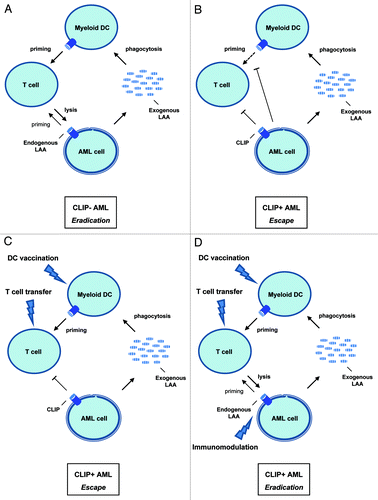Figures & data
Figure 1. The potential role of CLIP in AML immunopathogenesis and immunotherapy. Situations before and after immunotherapy in patients with AML are proposed: (A) Tumor immunity in untreated CLIP- AML; LAA-specific T cell priming and recognition are optimal due to enhanced endogenous LAA presentation by leukemic cells. (B) Tumor immune escape in untreated CLIP+ AML; leukemia-specific T cell priming as well as recognition are hampered because of inhibition of DC function and low immunogenicity by CLIP+ leukemic cells. (C) Tumor immune escape in treated CLIP+ AML; although priming of leukemia-specific T cells is resolved by DC vaccination or T cell transfer, leukemic cells still escape their recognition by expressing CLIP. (D) Tumor immunity in treated CLIP+ AML; by using DC vaccination or T cell transfer in combination with in vivo immunomodulatory drugs, both T cell priming and recognition are targeted, which might induce a potent immune response against leukemic cells.
